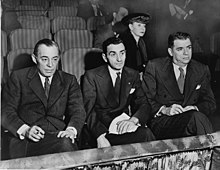Piano Sheets > Oscar Hammerstein II Sheet Music > Oh, What a Beautiful Mornin' (ver. 1) Piano Sheet
Oh, What a Beautiful Mornin' (ver. 1) by Oscar Hammerstein II - Piano Sheets and Free Sheet Music

About the Song
"Oh What a Beautiful Mornin'" is the opening song from the musical Oklahoma! written by composer Richard Rodgers and lyricist/librettist Oscar Hammerstein II. It is sung by Curly McLain at the beginning of the first scene and was the first a cappella opening to a musical. Oscar Hammerstein II (pronounced /ˈhæmərstaɪn/; July 12, 1895 – August 23, 1960) was an American writer, producer, and (usually uncredited) director of musicals for almost forty years, collaborating on many of the most important pieces of musical theatre of the twentieth century.
Hammerstein won eight Tony Awards and was twice awarded an Academy Award for "Best Original Song", and much of his work is considered to be part of the unofficial Great American Songbook. He wrote an estimated 850 songs, dozens of which have become standards. Hammerstein was the lyricist and playwright in his partnerships; his.
Download this sheet!
About the Artist

Random article
How to read free sheet music effectively If you are starting out learning how to play piano one of the first things is to learn how to read sheet music for piano. This includes usage of various concepts like treble clefs, bass clefs, key signature and ability to understand actual music notes.
The two clefs
When it comes to piano notes there are two kinds of clefs. Every clef will have a different note in the space and line. The notes typically begin from A and end with G and repeating the pattern again. Starting a piano sheet from C would then take you to D and then E. when it comes to reading sheet music it takes a little more practice and patience. You would need to memorize the music notes through acronyms to make it easier.
(More...)
